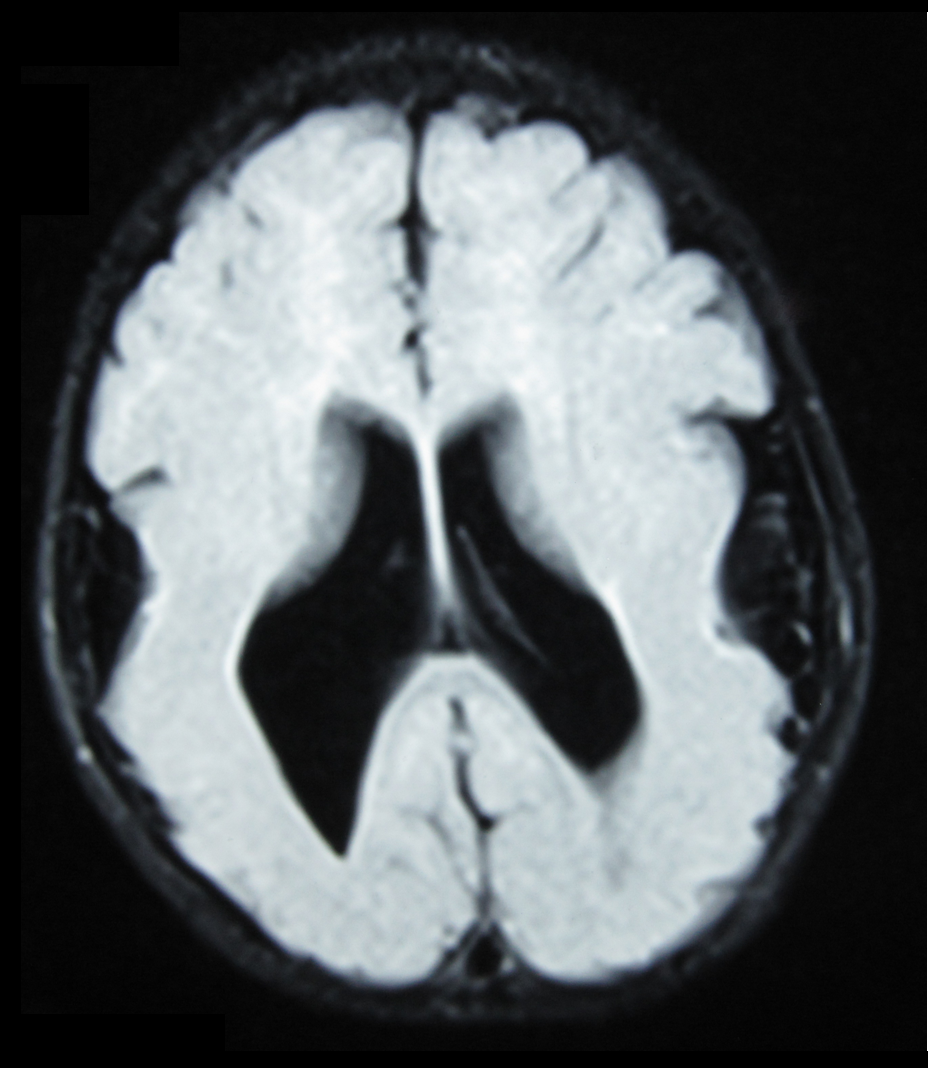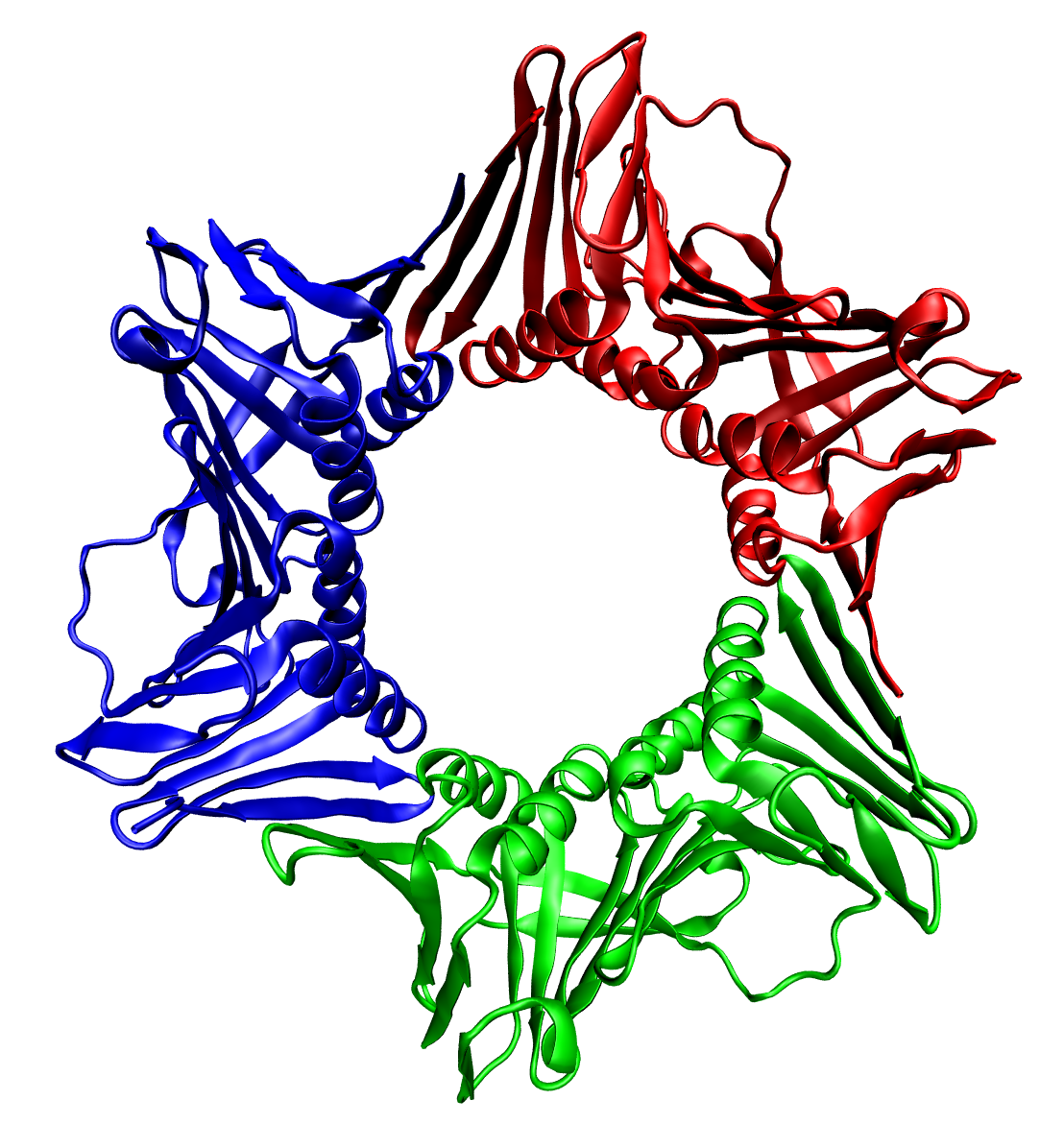|
Lis1
Platelet-activating factor acetylhydrolase IB subunit alpha is an enzyme that in humans is encoded by the ''PAFAH1B1'' gene. The protein is often referred to as Lis1 and plays an important role in regulating the motor protein Dynein. Function PAFAH1B1 was identified as encoding a gene that when mutated or lost caused the lissencephaly associated with Miller–Dieker syndrome. PAFAH1B1 encodes the non-catalytic alpha subunit of the intracellular Ib isoform of platelet-activating factor acetylhydrolase, a heterotrimeric enzyme that specifically catalyzes the removal of the acetyl group at the SN-2 position of platelet-activating factor (identified as 1-O-alkyl-2-acetyl-sn-glyceryl-3-phosphorylcholine). Two other isoforms of intracellular platelet-activating factor acetylhydrolase exist: one composed of multiple subunits, the other, a single subunit. In addition, a single-subunit isoform of this enzyme is found in serum. According to one study, PAFAH1B1 interacts with VLDLR rece ... [...More Info...] [...Related Items...] OR: [Wikipedia] [Google] [Baidu] |
Lissencephaly
Lissencephaly (, meaning "smooth brain") is a set of rare brain disorders whereby the whole or parts of the surface of the brain appear smooth. It is caused by defective neuronal migration during the 12th to 24th weeks of gestation resulting in a lack of development of brain folds (gyri) and grooves (sulci). It is a form of cephalic disorder. Terms such as ''agyria'' (no gyri) and ''pachygyria'' (broad gyri) are used to describe the appearance of the surface of the brain. Children with lissencephaly generally have significant developmental delays, but these vary greatly from child to child depending on the degree of brain malformation and seizure control. Life expectancy can be shortened, generally due to respiratory problems. Symptoms and signs Affected children display severe psychomotor impairment, failure to thrive, seizures, and muscle spasticity or hypotonia. Other symptoms of the disorder may include unusual facial appearance, difficulty swallowing, and anomalies of the ... [...More Info...] [...Related Items...] OR: [Wikipedia] [Google] [Baidu] |
Doublecortin
Neuronal migration protein doublecortin, also known as doublin or lissencephalin-X is a protein that in humans is encoded by the DCX gene. Function Doublecortin (DCX) is a microtubule-associated protein expressed by neuronal precursor cells and immature neurons in embryonic and adult cortical structures. Neuronal precursor cells begin to express DCX while actively dividing, and their neuronal daughter cells continue to express DCX for 2–3 weeks as the cells mature into neurons. Downregulation of DCX begins after 2 weeks, and occurs at the same time that these cells begin to express NeuN, a neuronal marker. Due to the nearly exclusive expression of DCX in developing neurons, this protein has been used increasingly as a marker for neurogenesis. Indeed, levels of DCX expression increase in response to exercise, and that increase occurs in parallel with increased BrdU labeling, which is currently a "gold standard" in measuring neurogenesis. Doublecortin was found to bind to th ... [...More Info...] [...Related Items...] OR: [Wikipedia] [Google] [Baidu] |
NDEL1
Nuclear distribution protein nudE-like 1 is a protein that in humans is encoded by the ''NDEL1'' gene. This gene encodes a thiol-activated oligopeptidase that is phosphorylated in M phase of the cell cycle. Phosphorylation regulates the cell cycle-dependent distribution of this protein, with a fraction of the protein bound strongly to centrosomes in interphase and localized to mitotic spindles in early M phase. Overall, this protein plays a role in nervous system development. Alternate transcriptional splice variants, encoding different isoforms, have been characterized. Interactions NDEL1 has been shown to interact with Cyclin-dependent kinase 5, YWHAE, PAFAH1B1 and DISC1 Disrupted in schizophrenia 1 is a protein that in humans is encoded by the ''DISC1'' gene. In coordination with a wide array of interacting partners, DISC1 has been shown to participate in the regulation of cell proliferation, differentiation, m .... References Further reading * * * * * * * ... [...More Info...] [...Related Items...] OR: [Wikipedia] [Google] [Baidu] |
NDE1
Nuclear distribution protein nudE homolog 1 is a protein that in humans is encoded by the ''NDE1'' gene. Clinical significance Mutations in both copies of NDE1 cause microlissencephaly Microlissencephaly (MLIS) is a rare congenital brain disorder that combines severe microcephaly (small head) with lissencephaly (smooth brain surface due to absent sulci and gyri). Microlissencephaly is a heterogeneous disorder, i.e. it has many d ... type 4. References Further reading * * * * * * * * * * * * * * * Human proteins {{gene-16-stub ... [...More Info...] [...Related Items...] OR: [Wikipedia] [Google] [Baidu] |
Reelin
Reelin, encoded by the ''RELN'' gene, is a large secreted extracellular matrix glycoprotein that helps regulate processes of neuronal migration and positioning in the developing brain by controlling cell–cell interactions. Besides this important role in early development, reelin continues to work in the adult brain. It modulates synaptic plasticity by enhancing the induction and maintenance of long-term potentiation. It also stimulates dendrite and dendritic spine development and regulates the continuing migration of neuroblasts generated in adult neurogenesis sites like the subventricular and subgranular zones. It is found not only in the brain but also in the liver, thyroid gland, adrenal gland, Fallopian tube, breast and in comparatively lower levels across a range of anatomical regions. Reelin has been suggested to be implicated in pathogenesis of several brain diseases. The expression of the protein has been found to be significantly lower in schizophrenia and psycho ... [...More Info...] [...Related Items...] OR: [Wikipedia] [Google] [Baidu] |
Miller–Dieker Syndrome
Miller–Dieker syndrome, Miller–Dieker lissencephaly syndrome (MDLS), and chromosome 17p13.3 deletion syndrome is a micro deletion syndrome characterized by congenital malformations. Congenital malformations are physical defects detectable in an infant at birth which can involve many different parts of the body including the brain, hearts, lungs, liver, bones, or intestinal tract. MDS is a contiguous gene syndrome – a disorder due to the deletion of multiple gene loci adjacent to one another. The disorder arises from the deletion of part of the small arm of chromosome 17p (which includes both the ''LIS1'' and '' 14-3-3 epsilon'' genes), leading to partial monosomy. There may be unbalanced translocations (i.e. 17q:17p or 12q:17p), or the presence of a ring chromosome 17. This syndrome should not be confused with Miller syndrome, an unrelated rare genetic disorder, or Miller Fisher syndrome, a form of Guillain–Barré syndrome. Presentation The brain is abnormally smooth, wit ... [...More Info...] [...Related Items...] OR: [Wikipedia] [Google] [Baidu] |
CLIP1
CAP-GLY domain containing linker protein 1, also known as CLIP1, is a protein which in humans is encoded by the ''CLIP1'' gene. Interactions CLIP1 has been shown to interact with IQGAP1, Mammalian target of rapamycin and PAFAH1B1 Platelet-activating factor acetylhydrolase IB subunit alpha is an enzyme that in humans is encoded by the ''PAFAH1B1'' gene. The protein is often referred to as Lis1 and plays an important role in regulating the motor protein Dynein. Function .... References External links * Further reading * * * * * * * * * * * * * * * * * * {{gene-12-stub ... [...More Info...] [...Related Items...] OR: [Wikipedia] [Google] [Baidu] |
DYNC1H1
Cytoplasmic dynein 1 heavy chain 1 is a protein that in humans is encoded by the ''DYNC1H1'' gene. Interactions DYNC1H1 has been shown to Protein-protein interaction, interact with PAFAH1B1 and CDC5L. Clinical relevance Mutations in this gene have been shown to cause dominant axonal Charcot-Marie-Tooth disease as well as spinal muscular atrophy with lower extremity predominance 1 (SMA-LED1). References Further reading * * * * * * * * * * * * * * * * * * External links * {{gene-14-stub ... [...More Info...] [...Related Items...] OR: [Wikipedia] [Google] [Baidu] |
TUBA1A
Tubulin alpha-1A chain is a protein that in humans is encoded by the ''TUBA1A'' gene. Background Tubulin alpha-1A chain is an alpha-tubulin that participates in the formation of microtubules - structural proteins that participate in cytoskeletal structure. Specifically, microtubules are composed of a heterodimer of alpha and beta-tubulin molecules. Cowan et al. demonstrated that bα1 is a primary α-tubulin of the human fetal brain, and that it is expressed solely in that structure, by way of Northern blot. Miller et al. further elaborated on the role of α-tubulins and the process of neuronal development and maturation, comparing the expressions of rat α-tubulins Tα1 and T26. These two rat α-tubulins are homologs of bα1 and kα1 showing that a rat homolog of human TUBA1A (Tα1) had elevated expression during the extension of neuronal processes. Culturing of pheochromocytoma cells with Nerve Growth Factor (NGF) induced differentiation and the development of neuronal processes. ... [...More Info...] [...Related Items...] OR: [Wikipedia] [Google] [Baidu] |
VLDLR
The very-low-density-lipoprotein receptor (VLDLR) is a transmembrane lipoprotein receptor of the low-density-lipoprotein (LDL) receptor family. VLDLR shows considerable homology with the members of this lineage. Discovered in 1992 by T. Yamamoto, VLDLR is widely distributed throughout the tissues of the body, including the heart, skeletal muscle, adipose tissue, and the brain, but is absent from the liver. This receptor has an important role in cholesterol uptake, metabolism of apolipoprotein E-containing triacylglycerol-rich lipoproteins, and neuronal migration in the developing brain. In humans, VLDLR is encoded by the ''VLDLR'' gene. Mutations of this gene may lead to a variety of symptoms and diseases, which include type I lissencephaly, cerebellar hypoplasia, and atherosclerosis. Protein structure VLDLR is a member of the low-density-lipoprotein (LDL) receptor family, which is entirely composed of type I transmembrane lipoprotein receptors. All members of this family share ... [...More Info...] [...Related Items...] OR: [Wikipedia] [Google] [Baidu] |
Platelet-activating Factor Acetylhydrolase
The enzyme 1-alkyl-2-acetylglycerophosphocholine esterase (EC 3.1.1.47) catalyzes the reaction :1-alkyl-2-acetyl-''sn''-glycero-3-phosphocholine + H2O \rightleftharpoons 1-alkyl-''sn''-glycero-3-phosphocholine + acetate The former is also known as platelet-activating factor. There are multiple enzymes with this function: * Lipoprotein-associated phospholipase A2 * Platelet-activating factor acetylhydrolase 2, cytoplasmic * Platelet-activating factor acetylhydrolase 1b: regulatory subunit 1, catalytic subunit 2, catalytic subunit 3 This enzyme belongs to the family of hydrolases, specifically those acting on carboxylic ester bonds. The systematic name of this enzyme class is 1-alkyl-2-acetyl-''sn''-glycero-3-phosphocholine acetohydrolase. Other names in common use include 1-alkyl-2-acetyl-sn-glycero-3-phosphocholine acetylhydrolase, and alkylacetyl-GPC:acetylhydrolase. This enzyme participates in ether lipid metabolism. Structural studies As of late 2007, 7 structures ... [...More Info...] [...Related Items...] OR: [Wikipedia] [Google] [Baidu] |
Heterotrimeric
In biochemistry, a protein trimer is a macromolecular Complex (chemistry), complex formed by three, usually covalent bond, non-covalently bound, macromolecules like proteins or nucleic acids. A homotrimer would be formed by three identical molecules. A heterotrimer would be formed by three different macromolecules. Type II Collagen is an example of homotrimeric protein. Porin (protein), Porins usually arrange themselves in membranes as trimers. Bacteriophage T4 tail fiber Multiple copies of a polypeptide encoded by a gene often can form an aggregate referred to as a multimer. When a multimer is formed from polypeptides produced by two different mutant alleles of a particular gene, the mixed multimer may exhibit greater functional activity than the unmixed multimers formed by each of the mutants alone. When a mixed multimer displays increased functionality relative to the unmixed multimers, the phenomenon is referred to as complementation (genetics), intragenic complementation. ... [...More Info...] [...Related Items...] OR: [Wikipedia] [Google] [Baidu] |




